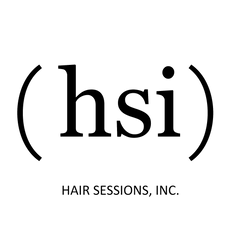Hair straightening treatments have evolved significantly, offering various solutions for individuals looking to achieve smooth, sleek locks. Two of the most popular options are relaxers and keratin treatments. But which one is best for you? Choosing the right method depends on your hair type, desired results, and overall hair health. This article explores the key differences, benefits, drawbacks, and maintenance needs of each treatment to help you make an informed decision.
Understanding Hair Relaxers
What Are Hair Relaxers?
Hair relaxers are chemical-based treatments designed to permanently straighten naturally curly or kinky coily hair by breaking the hair’s natural bonds. They are especially popular among individuals with tight curls or coarse hair who want a long-lasting straightening solution.
Common types of relaxers include:
-
Lye relaxers – Contain sodium hydroxide, work quickly but can be harsher on the scalp.
-
No-lye relaxers – Use calcium hydroxide or guanidine carbonate, gentler but may cause calcium buildup in hair.
How Do Relaxers Work?
Relaxers break down the protein structure in hair, permanently altering its natural shape. Once applied, they straighten hair by disrupting the disulfide bonds, which control curl patterns. Because this change is permanent, hair will remain straight until new growth appears.
Pros of Using Hair Relaxers
-
Long-lasting straightening – No need for daily heat styling.
-
Effective on tightly coiled and coarse hair – Achieves the straightest possible look.
-
Smoother, more manageable hair – Reduces frizz and bulkiness.
Cons of Using Hair Relaxers
-
Potential damage – Can weaken hair structure, leading to brittleness and breakage.
-
Chemical exposure risks – Can cause scalp burns or irritation if misapplied.
-
Frequent maintenance required – Touch-ups are needed every 6-8 weeks as new hair grows.
Understanding Keratin Treatments
What Is a Keratin Treatment?
Keratin treatments are semi-permanent hair smoothing treatments that infuse keratin (a natural protein found in hair) into the hair cuticle. Unlike relaxers, they do not break hair bonds but instead coat the hair to reduce frizz and enhance smoothness.
Popular types include:
-
Traditional keratin treatments – Long-lasting smoothness but may contain formaldehyde.
-
Brazilian Blowout – A milder alternative with shorter-lasting effects.
How Do Keratin Treatments Work?
Keratin treatments smooth the hair cuticle by sealing keratin and other conditioning agents into the strands using heat. They eliminate frizz and make hair more manageable without completely straightening it. The effects fade over time, typically lasting 3-5 months.
Pros of Using Keratin Treatments
-
Frizz reduction – Great for humid climates.
-
Enhances shine and softness – Makes hair healthier-looking.
-
Suitable for various hair types – Works on wavy, curly, and frizzy hair.
-
Less damaging than relaxers – Does not permanently alter hair structure.
Cons of Using Keratin Treatments
-
Not a permanent solution – Hair will gradually return to its natural state.
-
Potential exposure to formaldehyde – Some formulas contain chemicals that may cause irritation.
-
Aftercare requirements – Must use sulfate-free shampoos to maintain effects.
Key Differences Between Relaxers and Keratin Treatments
Chemical Composition and Process
-
Relaxers: Use strong chemicals (like sodium hydroxide) to break hair bonds permanently.
-
Keratin Treatments: Infuse keratin into the hair cuticle without altering its structure.
Duration and Longevity
-
Relaxers: Permanent straightening (only new growth requires touch-ups).
-
Keratin Treatments: Temporary results lasting 3-5 months.
Suitability for Hair Types
-
Relaxers: Best for coarse, kinky coily, or very curly hair that needs permanent straightening.
-
Keratin Treatments: Ideal for frizzy, wavy, or curly hair looking for smoother, more manageable locks.
Maintenance and Aftercare
-
Relaxers: Regular root touch-ups needed, but minimal daily styling required.
-
Keratin Treatments: Requires sulfate-free products, but less frequent treatments.
Cost Comparison
-
Relaxers: More affordable ($75-$175 per session) but requires frequent touch-ups.
-
Keratin Treatments: Higher upfront cost ($200-$500) but lasts longer.
Which One Is Right for You?
Choosing Based on Hair Type and Goals
-
For permanent straightening → Relaxers are the best choice.
-
For reducing frizz and enhancing manageability → Keratin is ideal.
-
For minimal chemical exposure → Keratin treatments are less harsh.
-
For coarse, tightly coiled hair → Relaxers provide long-term results.
-
For softer, healthier-looking hair → Keratin offers a natural finish.
Lifestyle and Maintenance Preferences
-
Low-maintenance routines: Relaxers require fewer touch-ups but need careful moisturizing.
-
Frequent styling changes: Keratin allows more flexibility since it gradually fades.
Safety Concerns and Sensitivities
-
Scalp sensitivity: Keratin treatments are gentler.
-
Chemical exposure risks: Formaldehyde in some keratin treatments vs. harsh chemicals in relaxers.
Final Verdict: Relaxers vs. Keratin – The Best Option for You
Choosing between relaxers and keratin treatments depends on your hair goals, type, and lifestyle. If you want permanently straight hair, go for relaxers. If you prefer a frizz-free, smooth look without altering your natural hair pattern, keratin treatments are a better fit. Always consider your hair’s health, budget, and maintenance preferences before deciding.
In conclusion, both relaxers and keratin treatments offer distinct benefits and drawbacks. Your decision should be based on your desired look, hair health, and maintenance commitment. Always consult a professional stylist to assess your hair's needs before undergoing any chemical treatment.
FAQs
1. Can I switch from a relaxer to a keratin treatment?
Yes, but you need to wait for relaxed hair to grow out or transition gradually to avoid excessive damage.
2. Is a keratin treatment safer than a relaxer?
Generally, yes. Keratin treatments do not permanently alter hair bonds and are less damaging. However, some may contain formaldehyde, so choosing a formaldehyde-free option is best.
3. Will a keratin treatment work on extremely curly hair?
Keratin treatments can reduce frizz and loosen curls, but they won’t completely straighten very coily hair like a relaxer would.
4. How often should I get a relaxer or keratin treatment?
-
Relaxers: Every 6-8 weeks for touch-ups.
-
Keratin Treatments: Every 3-5 months, depending on hair type and maintenance.
5. Can I do these treatments at home?
While DIY kits are available, professional application is recommended for best results and safety - so NO. lol


Leave a comment